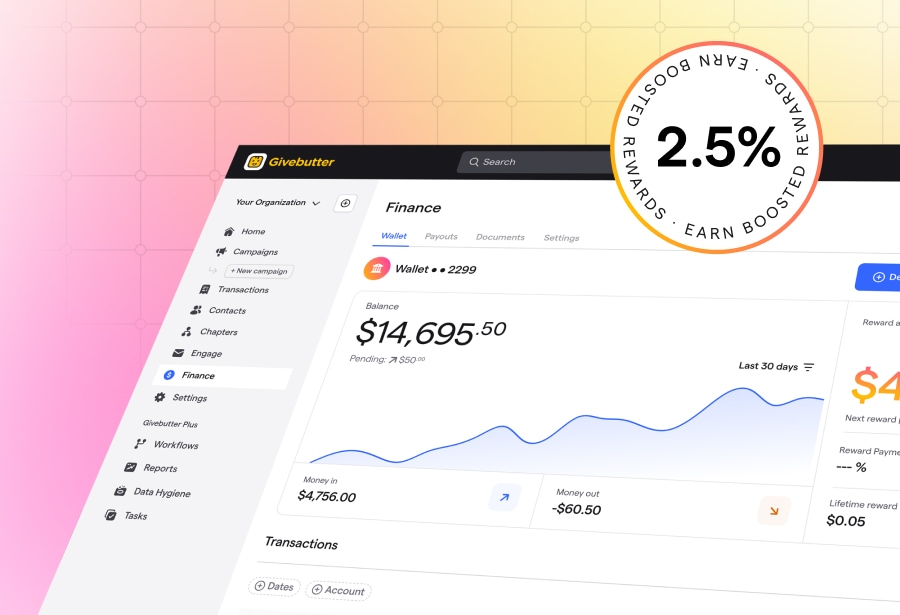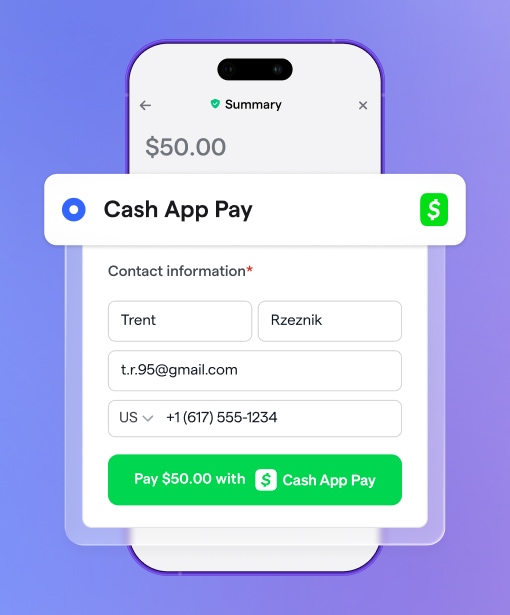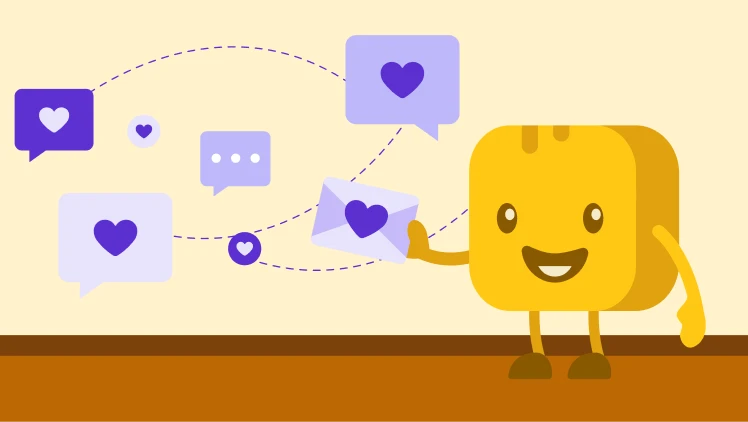Table of contents
Table of contents
Effective donor communication is one of the most important tools for nonprofits to build support and expand their reach. The right communications will inspire support for your mission, whether through volunteering or donations.
But with so many communication channels available, getting started can feel overwhelming. To avoid the pitfalls of donor fatigue, you’ll need to curate a concise, impactful strategy.
Fortunately, no matter your nonprofit’s mission or donor base, there are several techniques you can master to ensure effective donor communications and long-term success.
The power of donor communication: Why it matters
Donors are the backbone of any nonprofit—their support funds your mission and increases your impact. Donor communications refers to any type of interaction with your donor, from email and SMS to Instagram, direct mail, and face-to-face conversations.
Fostering strong relationships through communication—even when you’re not actively seeking donations—keeps your organization true to its mission and helps ensure support when you need it. A donor communication plan provides a strategic framework for building these relationships.
How to create a donor communications plan in 7 steps
Forming a plan in advance keeps your messaging streamlined and effective. Blocking out time now to research and strategize will save you time and energy in the long run. It also makes for easier evaluation, so you can determine what works and pivot as needed.
1. Set your goals and objectives 🥅
Decide exactly what you want to accomplish. Are you hoping to enlist volunteers, find new donors, or raise a certain amount of money? Whatever your goal, keeping it clear in your mind will help you build an effective communications plan.Remember, regular communication fosters a sense of community and ensures you can count on your supporters to contribute when the time comes. Your communications goal could be as simple as sending a monthly update to nurture your support base.
2. Understand your donors 💡
You’ve set your goals. Now, it’s time to get to know your supporters. Understanding your donor base helps you tailor communications based on their unique interests. Review demographics like age, giving history, and personal interests. Donor segmentation tools organize supporters by giving frequency, contact information, and more, making it easy to analyze trends and send messages targeted to select groups. Create specific donor personas using this information. Keep these front of mind as you craft communications. This way, you’ll strike the right tone and create content that resonates with your audience.As your nonprofit grows, collect supporters’ data to build your donor database. From here, it’s much easier to create communications that have a lasting impact on your fundraising efforts.
3. Choose your communication channels 📣
Now that you’ve determined who you’re trying to reach, it’s time to decide how to reach them. Do your supporters typically engage more with email newsletters or fundraising campaigns? Don’t limit yourself to a single method of communication. Using a combination of three to four channels can expand your reach. Here are a few ideas to get you started:
- Email: Share newsletters, automated giving campaigns, and updates straight to your supporters’ inbox.
- Social media: For fast engagement, post updates on platforms like Facebook and Instagram. Social media is a great tool for highlighting your impact and promoting events.
- Website: Optimize your website for simple navigation. Add widgets to your home page so supporters can easily sign up for emails or donate.
- Direct mail: There’s nothing quite like direct mail for special occasions or thank yous. A personalized note adds a thoughtful touch to your outreach.
- Text messaging: For quick updates, event reminders, or urgent donation appeals, text messaging is an effective solution.
- Phone calls: A personal call is one of the best ways to thank major donors. Occasional calls also help build stronger relationships.
4. Craft compelling communications ✍️
The key to building meaningful connections with your supporters lies in storytelling that leaves a big impression. Your communications need to inspire action—whether it’s donating, volunteering, attending an event, or simply learning more about your mission.
Transparency should be at the heart of your strategy, and it’s a cornerstone of stewardship (nurturing relationships once someone has become a donor). Your donors want to understand how their contributions positively impact change.
Be sure to share your fundraising goals, the challenges you’re tackling, and how you plan to overcome them. Highlight the lives you’ve changed through your work—specific stories resonate deeply and motivate supporters to take action.
And remember: always thank your donors. Every donation matters, no matter the size. With nonprofit workflows, you can automate personalized thank you emails, leaving you with one less item on your to-do list.
5. Map out communication touch points across the donor journey 🗺️
Based on where someone is on their donor journey—also known as the donor cultivation lifecycle—they’ll need tailored communication. Create specific messages to align with each point of the donor journey.Supporters at the awareness stage, for example, are more likely to appreciate a large overview of the work you’re doing. Those making their first donation should always receive a thank you note. Regular givers are more likely to appreciate detailed updates. These are the seven stages of the donor journey:
- Awareness
- Interest
- First donation
- Engagement
- Regular giving
- Major giving
- Legacy giving
6. Build a content calendar 🗓️
It’s important to keep communications regular and consistent. Building out a high-level content calendar with a consistent cadence helps achieve this. This could involve thank you letters, monthly newsletters, event reminders, volunteer opportunities, and holiday cards.
Expect your content calendar to be flexible. Urgent situations may come up, or you may need to change course, and that’s okay.
Don’t overwhelm your supporters with communication; donor burnout is real and can lead to a drop-off in donations. Instead, keep your communications compelling, concise, and regular—without bombarding anyone!
7. Assign roles and responsibilities ✔️
Where donor communication is concerned, assigning clear roles and responsibilities within your team is essential. Using task management tools can help streamline assignments, track progress, and ensure nothing falls through the cracks. Consistent responsibilities will prevent overload and ensure communications aren’t overlooked or duplicated.
Once your team settles into their roles, sending out communications will become second nature!
Download your free donor communications plan template
Not sure where to start building your communications plan? Don’t worry—we’ve got you covered! Download our free donor communications plan template to map out your strategy for nonprofit growth.
Donor communications best practices
Every donor communication plan will be unique, depending on your mission, support base, and donor profiles, but consistency is always key. In fact, data shows that the average nonprofit raises almost $5.6K per email campaign. Without regular communication, nonprofit organizations risk losing out on donations.
No matter your goal or target audience, there are certain best practices you should follow to make the most of your communications.
- Begin communications early 👶 As soon as someone donates, signs up for your newsletter, or attends your event, add them to your communications list. This is the first step in nurturing a new supporter into an advocate.
- Segment and personalize 💅 With segmentation and personalization, nonprofits can tailor communications to be more relevant to their supporters. Make donors feel valued by offering deeper engagement opportunities, like volunteering and events.
- Be transparent 👻 Transparency should be a core value of every nonprofit. Let your supporters know how their donations are being spent with regular impact reports.
- Stay consistent ➿ Cultivate deeper connections by keeping communication regular. Real relationships take time to develop. Be patient and focus on fostering a sense of shared purpose and community.
- Host fundraising events 🎈 Face-to-face events are one of the best ways to facilitate conversation and community among supporters. Plus, it’s a great opportunity to gather feedback in a more casual setting.
- Optimize for mobile📱 According to NP Source, mobile giving donations increased by 205% in 2024. Prioritize optimizing your website and other communications for mobile devices.
- Seek feedback 💬 Make sure your communication isn’t one-sided. Regularly seek feedback from your supporters through surveys or in-person conversations.
- Evolve and adapt 🌱 Your communication plan will likely change over time, and that’s a good thing! It means you’re learning, adapting, and improving. Base your changes on feedback, data, and your observations of what works well and what doesn’t.
Elevate your communications strategy with Givebutter
Effective donor communication is the foundation of any successful fundraising strategy. By thoughtfully crafting your message, researching and segmenting your audience, and leveraging the right tools, you can cultivate strong, lasting relationships with your donors.
The right strategy can turn supporters into givers, givers into recurring donors, and recurring donors into advocates. With a little time and effort, your communication strategy will inspire greater generosity and engagement, helping you advance your mission.
Ready to transform your donor communications? Unlock the power of Givebutter’s donor communications software today.

.svg)






%20(1).png)



.svg)














